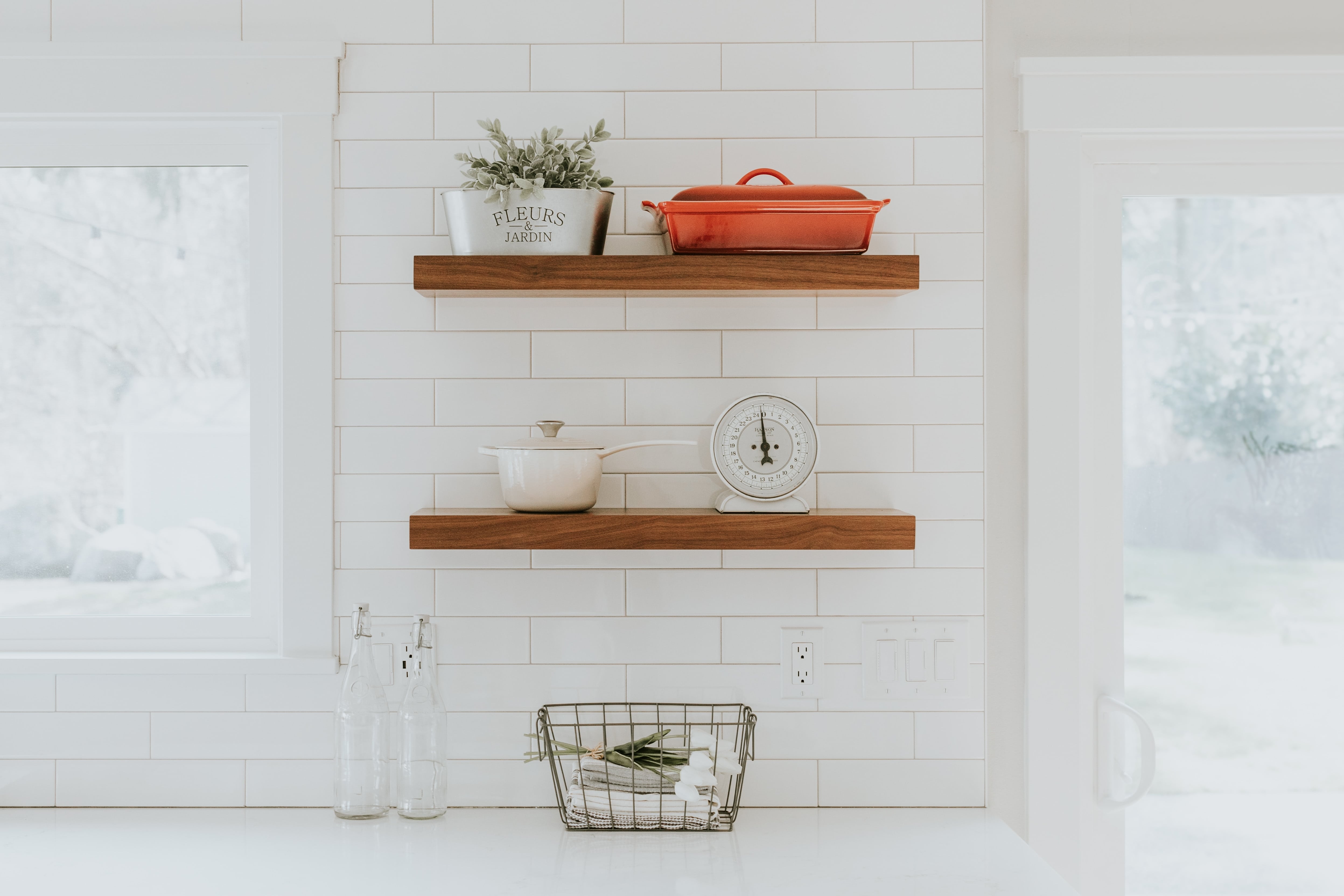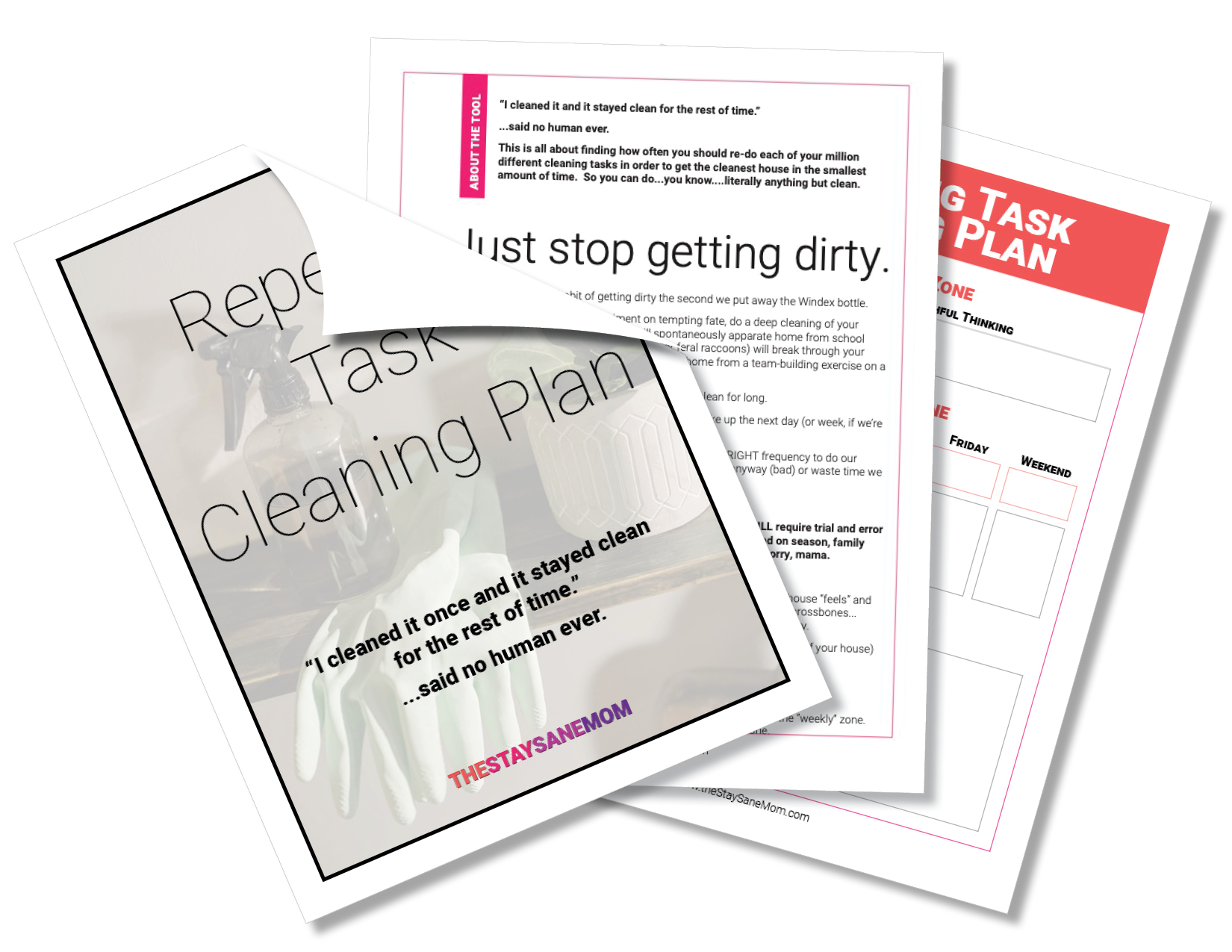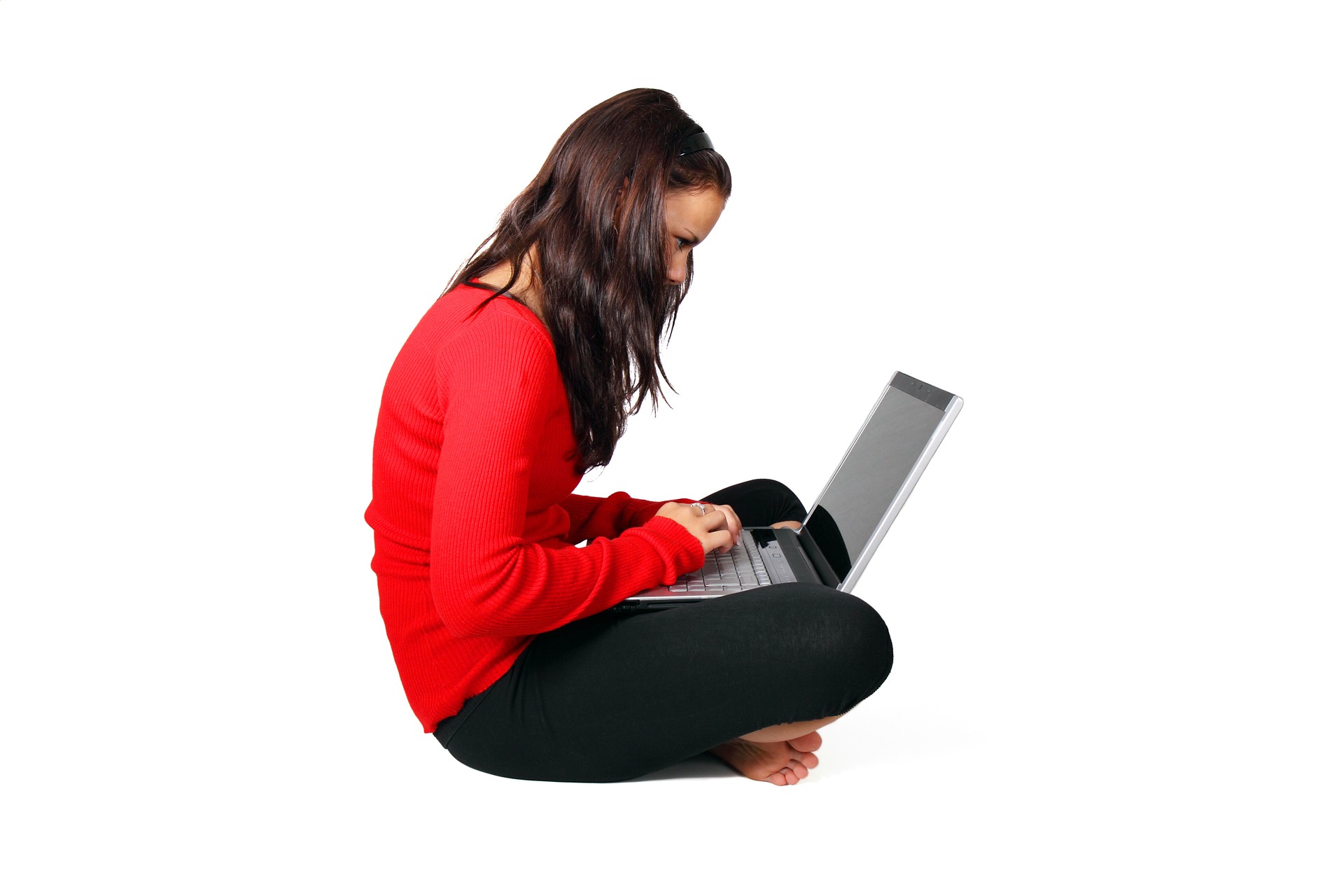Make Your Home Feel Bigger

Make Your Home Feel Bigger
Whether you recently downsized, your family recently expanded, or you’ve just started accumulating more stuff, sometimes houses can start to feel a bit cramped. Here's how to get your house feeling roomy and spacious again, without too large of a bill.
Written by Liz Bayardelle, PhD | See Comments | Updated 10/08/2019
Want to cut to the chase?
Repeating Item Cleaning Plan

Make Your Home Feel Bigger
This post contains some affiliate links for your convenience. Click here to read my full disclosure policy.
Whether you recently downsized, your family recently expanded, or you’ve just started accumulating more stuff, sometimes houses can start to feel a bit cramped.
No matter your circumstances, these ideas should help you figure out what is making your house feel cramped, diagnose some ways to fix it, and get your house feeling roomy and spacious again, without too large of a bill.
Get Your Head Around “Small-Space Living”
One of the biggest challenges you may encounter when you downsize from a large house is getting used to small-space living.
(If you’ve spent any time on a sailboat or your work as an air steward, you may already have mastered small-space living, but most of us have not.)
However, even if you’re in the very same house, there are significant benefits to getting used to the idea of downsizing. Ironically, downsizing and minimalism have a lot in common. It’s all about not keeping things around you just because you bought them at one point in time and are too ashamed to throw them in the garbage.
If you can slowly switch your mindset away from “I have it so it should live here” to “do I need this anymore” it can go a long way towards making your home feel less cluttered.
Get Inspiration
Do your homework online or check out interior design magazines to get inspiration from other people who have made small-space living into a fine art.
(Hint: weirdly enough, sailing magazines are a great place to start, as you don’t get much tighter spaces than the interior of a boat!)
Whereas before the idea of living in a small space may have seemed like doom to you, once you get inspired with creative ways to use and organize a tiny apartment, you can apply these ideas even to your normal-sized home and it will free up a lot of space.
Once you start thinking this way, you may be amazed by how much wasted space you have in your current home, like space under beds or on top of wardrobes that could easily be transformed into useful storage.
Think About Use Versus Space
Before you start packing, it’s worth starting to assess your furniture and larger possessions such as kitchen appliances in terms of how much space they take up verses how versatile and useful they are.
Making sure you’ve done these calculations will reduce the likelihood of you tolerating huge pieces of furniture or decorations (or kids’ toys) that eat up way more real estate than they deserve.
This is a big one for us parents. Trust me. Ask me about the monkey bars we built inside our NYC apartment or the giant car track we used to have in our entryway. Parents are notorious for tolerating craziness for the welfare (or amusement) of our kiddos.
You Will Need a System
Once you’ve got furniture and appliances sorted, you’re still left with many smaller items, such as ornaments, cutlery/crockery, clothing, linens, books…. (the list goes on) which can take up way more space than they should.
This is where things can get messy if you let them, and sentimentality can creep in if you’re not careful. A system is essential if you’re going to make good decisions based on what you will actually use, not just what you already have.
(The only thing worse than living in a tiny living space is living in a tiny living space that’s crammed with stuff you don’t need!)
Designate Three Categories of Items
Here’s a fail-safe system to help you get this done.
Once you’ve started sorting through your house, use this opportunity to decide which of your belongings actually makes your life better day-to-day, and which you could easily get by without.
You need three categories of objects, and I wouldn’t hesitate to actually make corresponding piles.
Call them what you like, but the basic concept is: “essential”, “maybe”, and “time to say goodbye.”
Cluster together the items that you feel you can’t live without and those are the ones which should be prominently displayed, put in easily reachable places, and kept.
The items that you really like having around but don’t actually need can be packed in the “maybe” boxes. You can keep these on hand for a few weeks to see if you actually miss anything inside. After you’ve proved to yourself that you don’t actually need anything in your “maybe” boxes (spoiler alert: you won’t), you can donate them to the charity of your choice.
And last of all—you guessed it—gather all the remaining items, give them a last look, and pack them into the “goodbye” boxes.
Time to Say Goodbye
When it comes time to rehome the things in your “goodbye” boxes, it may initially feel sad or painful (we’re human, after all—we all like to hold onto stuff) but at a certain point, it’s important to realize that holding onto things that you don’t use or even think about is not healthy.
If you do this process slowly, you may be able to get rid a lot of your “waste not, want not” guilt and sell a lot of your stuff on eBay or hold a yard sale.
While you may not think that your unwanted things have much value, you might be surprised. One person’s trash is another person’s treasure, right? And even if that old hockey stick only sells for a few dollars, your total will add up quickly if you’re selling loads of items, and eventually, you might be able to cover a significant portion of your moving expenses with the money you make selling stuff you hardly knew you had.
There will be things that you can’t sell, of course. In this case—or if you’re just feeling charitable and would rather donate than sell—it’s well worth donating your possessions when possible. Check out your local council website for information on the best places to donate in your community.
Finally, throw away what you can’t donate, paying attention to environmental concerns, of course. When it comes to appliances, some items should be disposed of with extreme care. Other items can be returned to the manufacturer, so it’s worth a quick Google before throwing things in the bin or recycling.
Invest in Short-term Self Storage
If you do have your doubts about some things in your “maybe” boxes, you can always look into short-term self storage. I wouldn’t advise this as a long-term solution, because it can add up, but if you are seriously stymied (or if you have decided to move interstate and chances are you won’t be making frequent visits back to your town of origin over the next few months) it can be a good choice.
If you simply cannot bear to get rid of some items but are also acutely aware that you need more space, storage units can be an effective stopgap solution while you figure out what to do with old books, clothes, and other items you don’t need anymore.
In this case, load up your “maybe” items and put them into temporary self-storage in a location near to your new home. If you’re moving somewhere within a drivable distance, or you plan to visit friends and family often, then don’t bother having the moving company cart these boxes for you—just take them to a local storage facility, or your generous friend’s garage.
Digitize Your Family Archive
This step is especially handy if you have kids, because chances are they have a lot of pictures, keepsakes, macaroni art, etc. taking up space.
If you’re currently living in a large home, you might enjoy the benefit of an entire room dedicated to the storage of things like family photos, old DVDs and home videos.
(Okay, and the odd dusty exercise machine…)
In many family homes, this room is sometimes optimistically dubbed “the office”. If you’re downsizing or starting to feel cramped, it’s unlikely that you’ll have the luxury of an “office” to store a bunch of junk you don’t actually use frequently.
One great way to save space is to reduce the amount of space taken up by your family archive by scanning your old photos. Original hard copies of old photos are valuable in and of themselves, but unless you’re actually planning on going through all those old shoeboxes of photos, it can be just as nice (and way more accessible) to have a well-organized digital library.
Draw on Your Kids’ Technology Skills
Many parents wouldn’t know where to start when it comes to digitizing images and video, but that needn’t stand in the way of this project.
If your children are old enough to operate a scanner (let’s be honest: if they can walk, they could probably design and launch their own apps) why not give your kids the task of scanning and digitizing your all your photos?
Not only will your children appreciate being part of the process, but they will feel valued and trusted. Spending time going through the family albums and collecting images together may also be able to feel connected to the family, it will be a fun time to reminisce, and kids just genuinely enjoy looking at pictures of themselves.
Keep the Decluttering Mindset
Whatever you do, it's really important to stay in the mindset that you don't need to keep things just because they're already in your house.
Your kids are going to bring home toys they don't really need that a relative gave them for some obscure holiday. They will have mountains of paperwork from school, priceless artifacts from various sources, and that's before we even get to your own stuff.
Make sure you keep an eye on how often you use things. Is there something that is displayed prominently in your house, but you haven't used it for over a year, it might be time to reallocate that space to something you actually make you use. Again, if you're on the fence about keeping something, throw it in the “maybe” box in the garage for a couple weeks and see if you even notice its absence. Nine times out of ten you won't remember it's gone until you find it in the box next time you go to discard something.
Need More Help?
If you still feel overwhelmed by your help-it's-closing-in-on-me house, check out my 14 Days to a Spotless House course. It not only takes you step by step through the process of turning your cluttered and dirty house into an actual thing of beauty, but it helps you create a plan to keep it that way in the long term.
Start Your Next Step
Repeating Item Cleaning Plan

Get Sanity, Delivered to Your Inbox.
Care to Share?
About the Author

Liz Bayardelle, PhD
Founder | Contributor
Liz (or Dr. Mommy, as her toddler started calling her after learning what a PhD was) is the happily sleep-deprived mom of a toddler (and professional raccoon noise impersonator), a sparkle-clad kidnado, a teenage stepdaughter, 200 cumulative pounds of dog, and herd of dustbunnies (if daily vacuuming doesn't occur). During nights and naptimes, she uses her PhD in business psychology as an author, speaker, and consultant. She also serves as an executive and principal for three companies, two of which she co-founded with her very patient (and equally exhausted) husband.





-Budget.jpg)